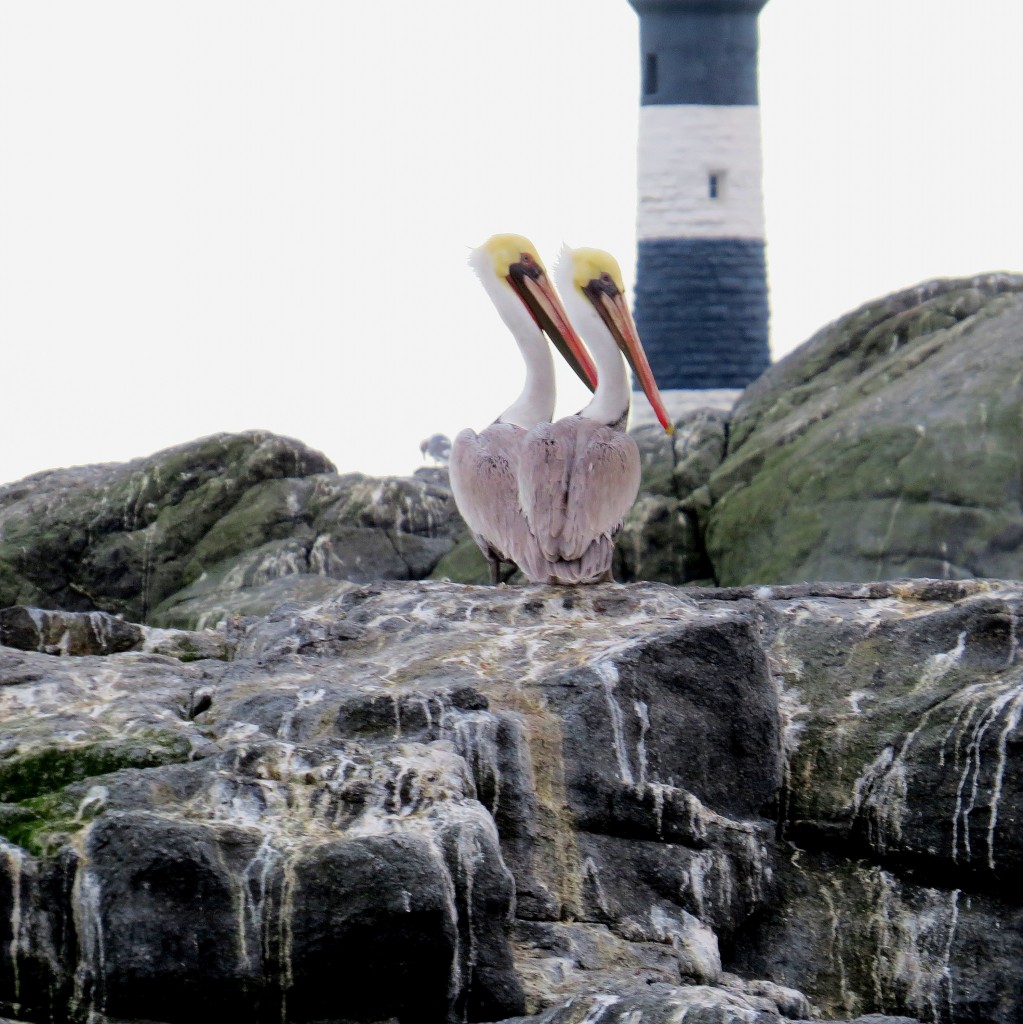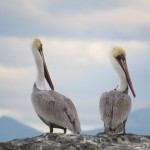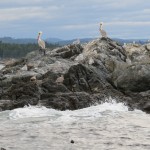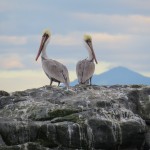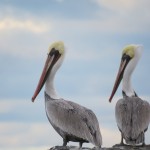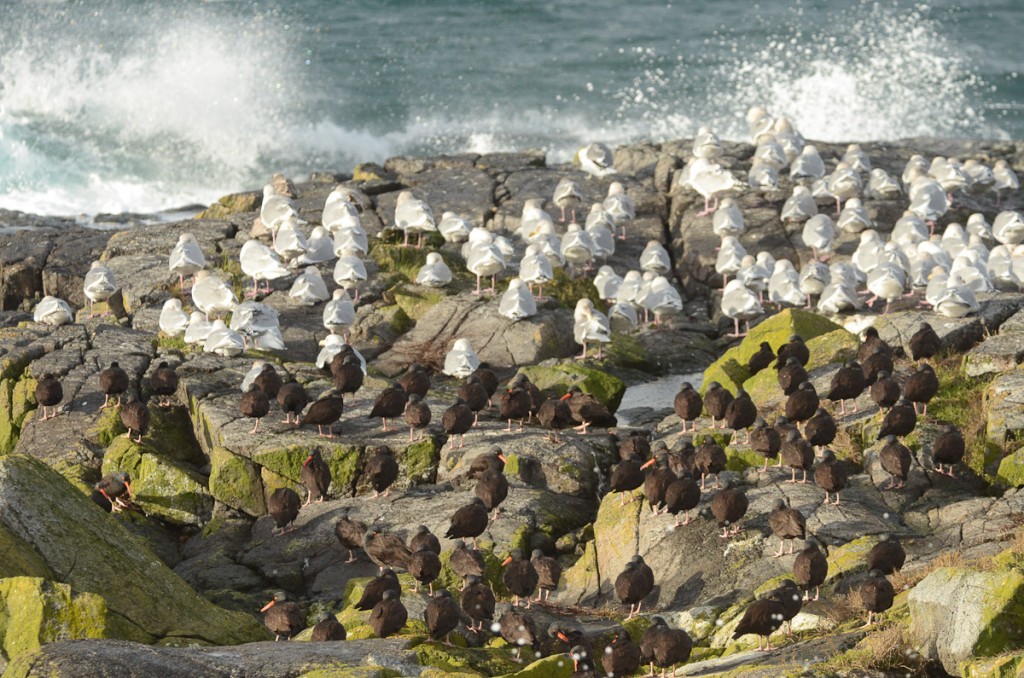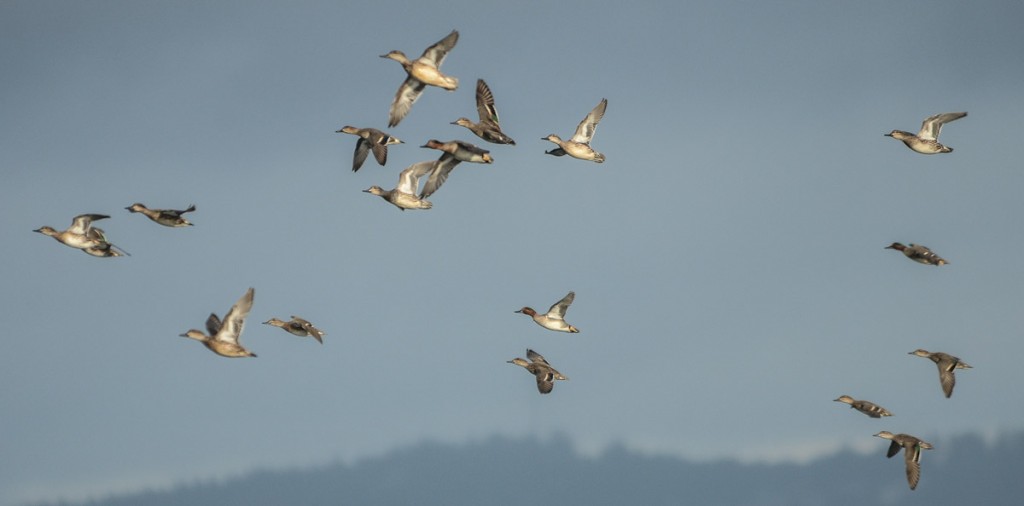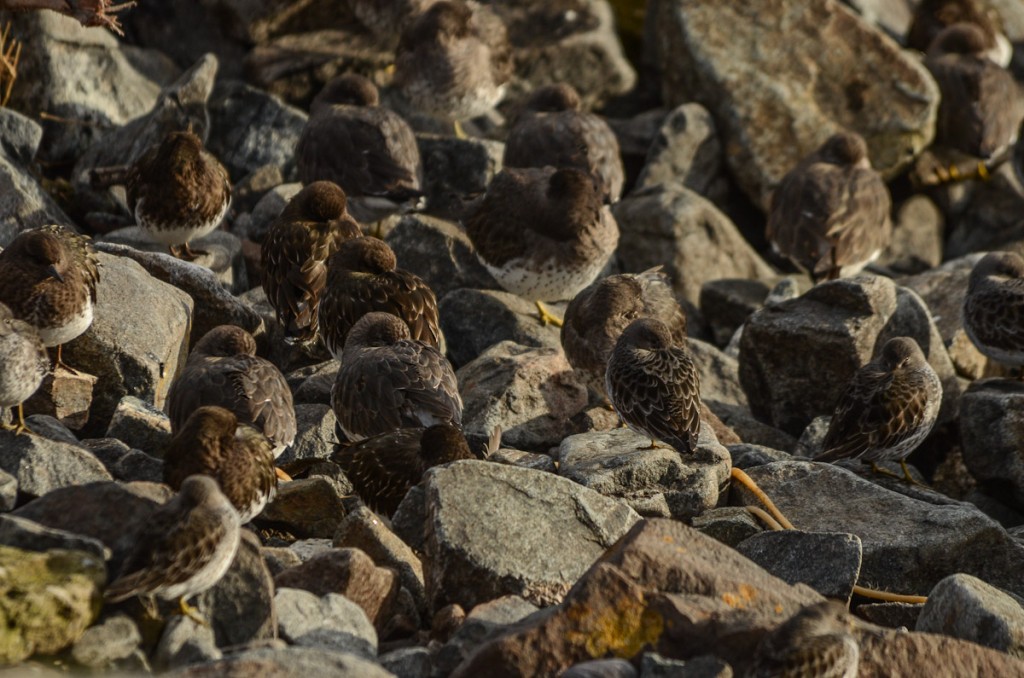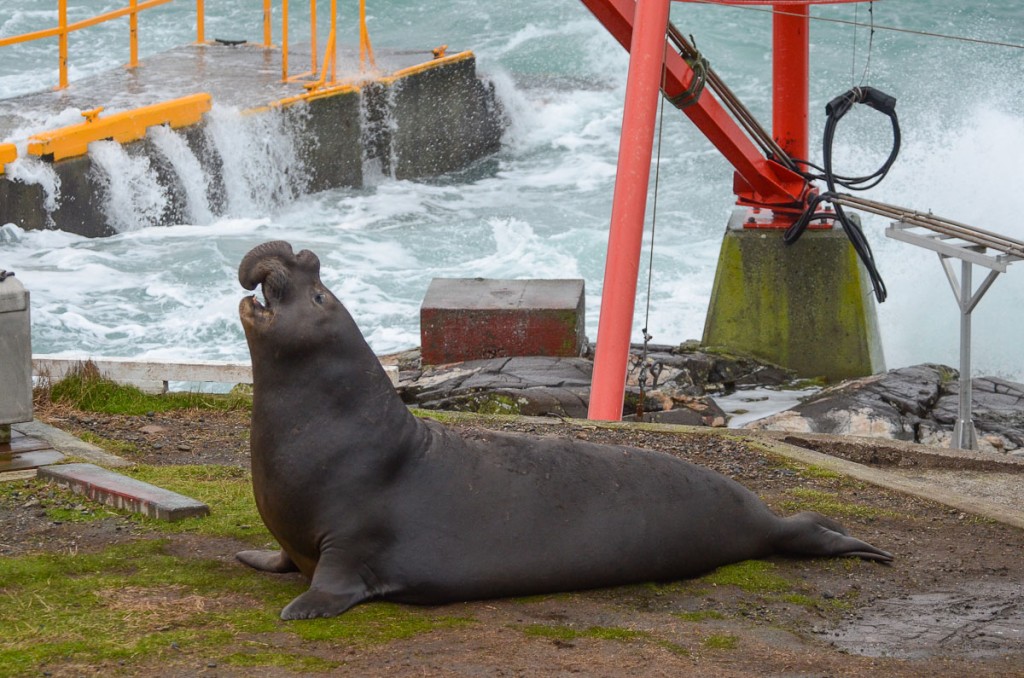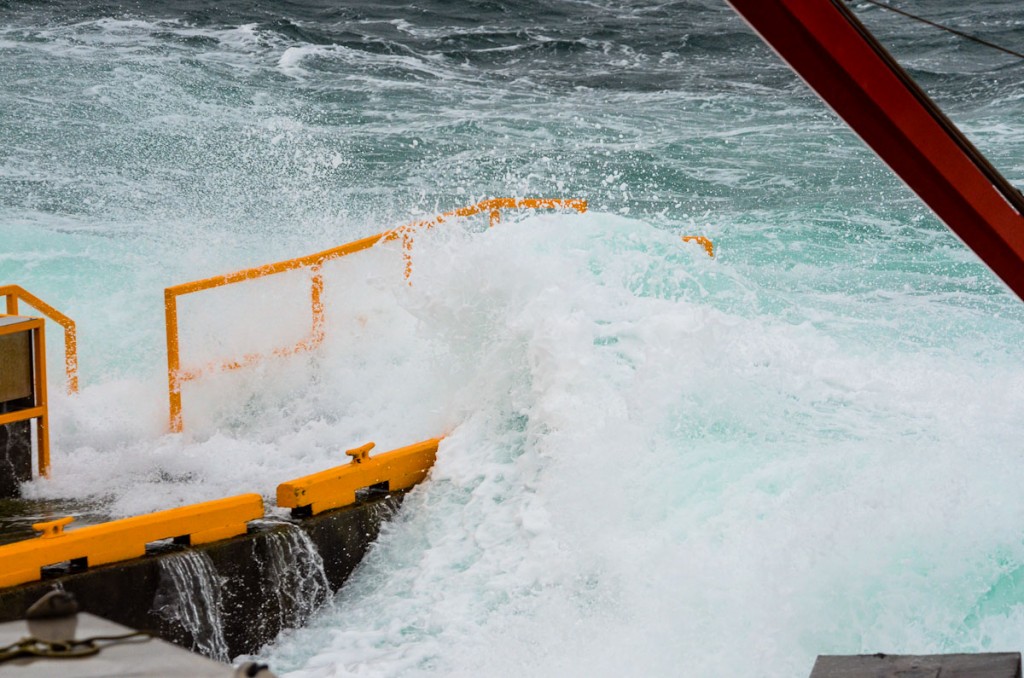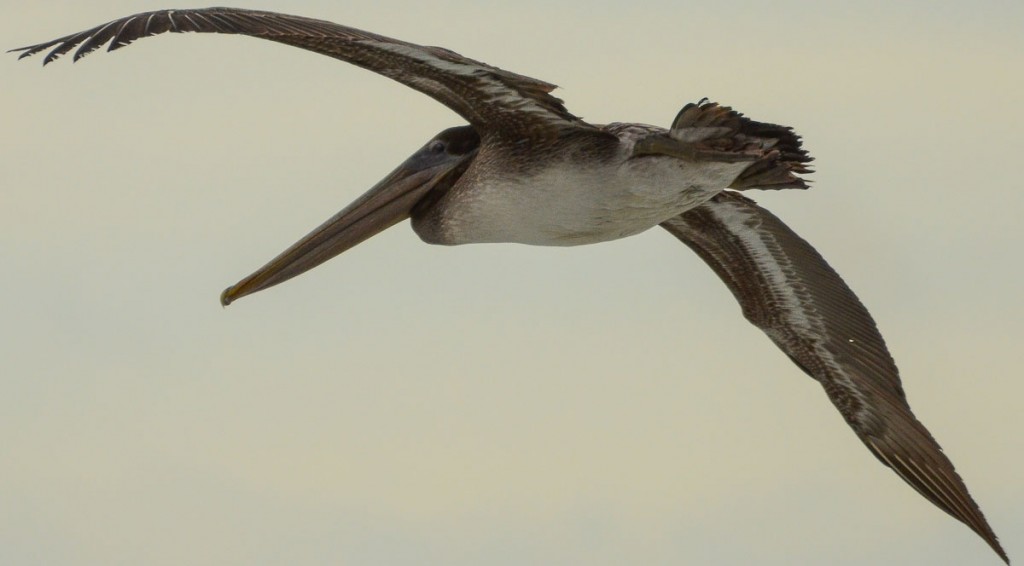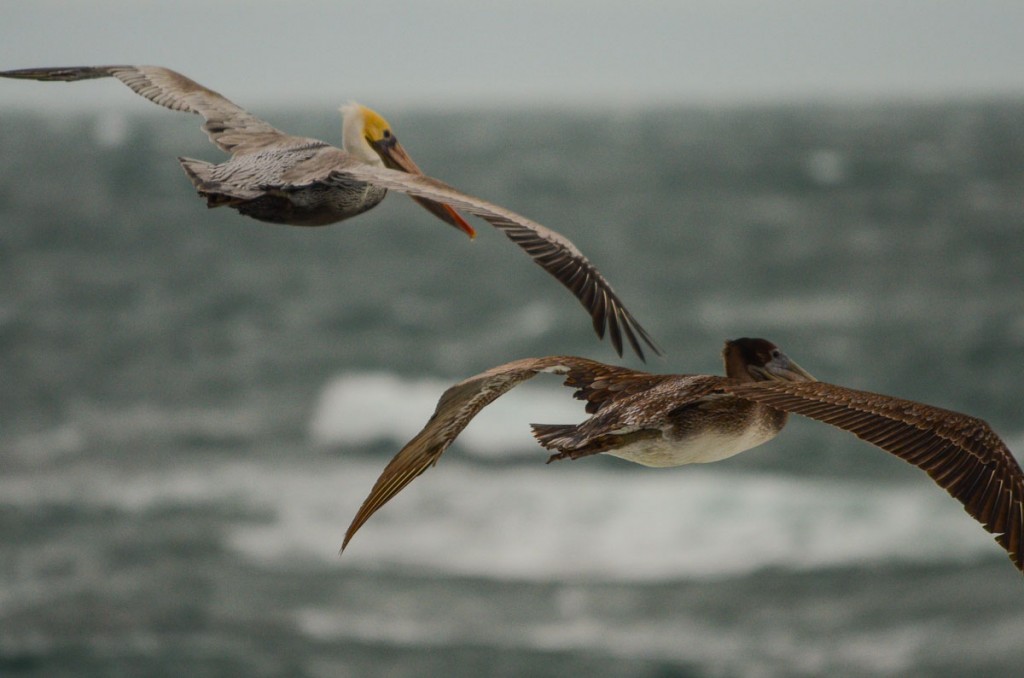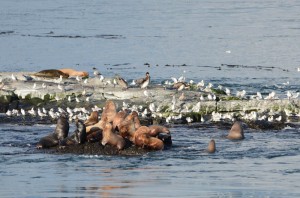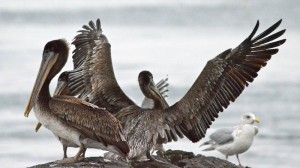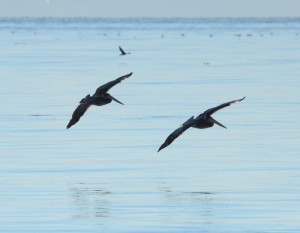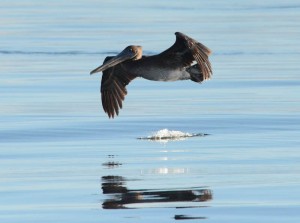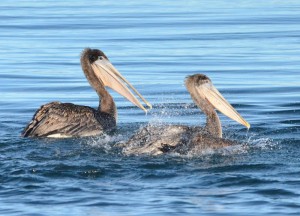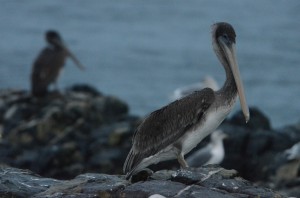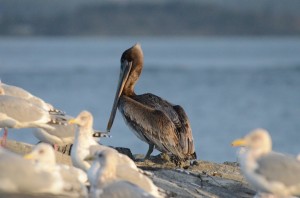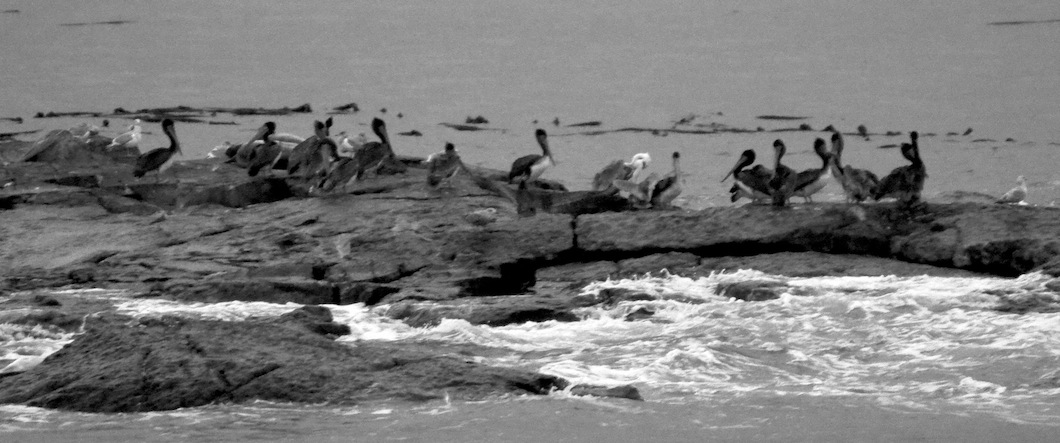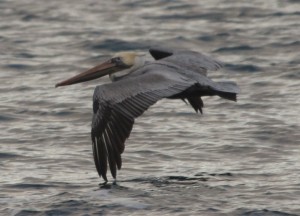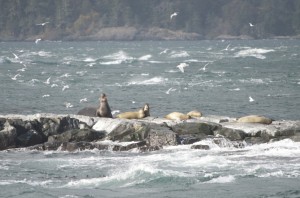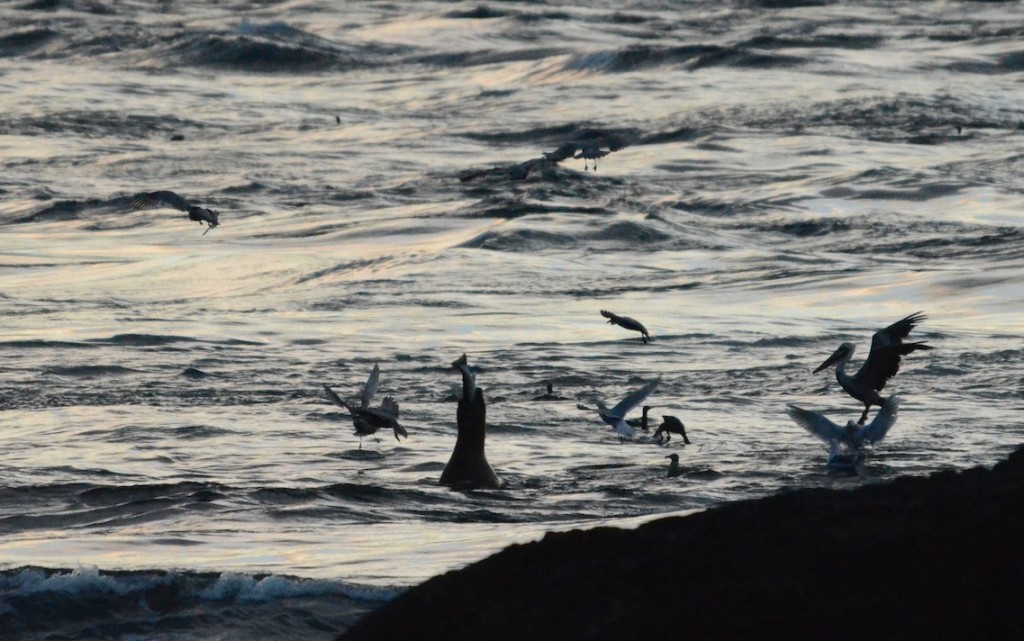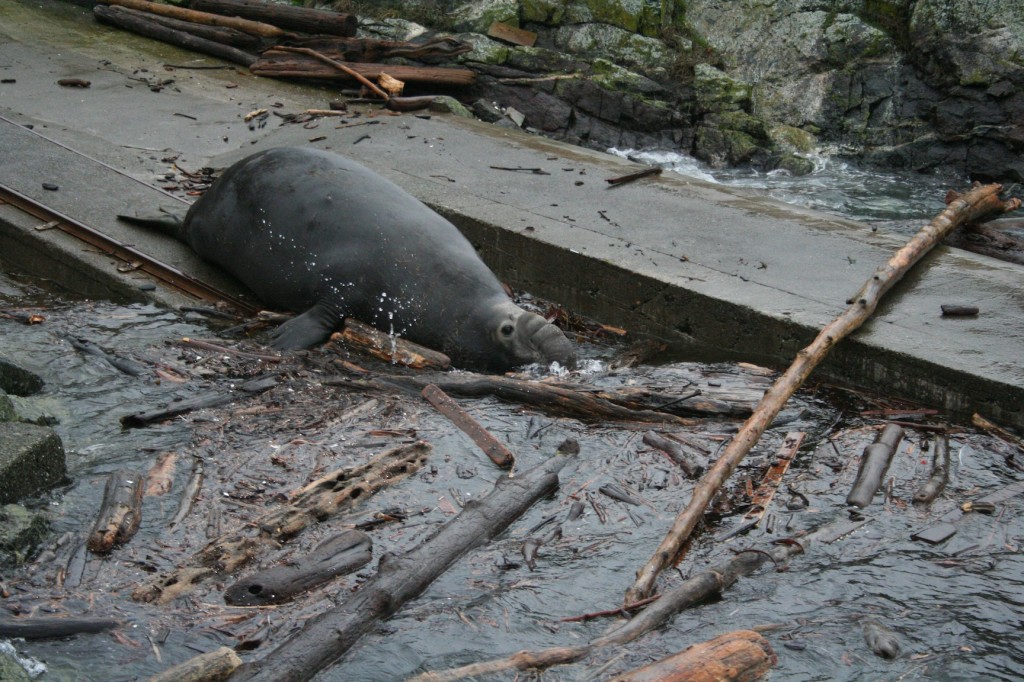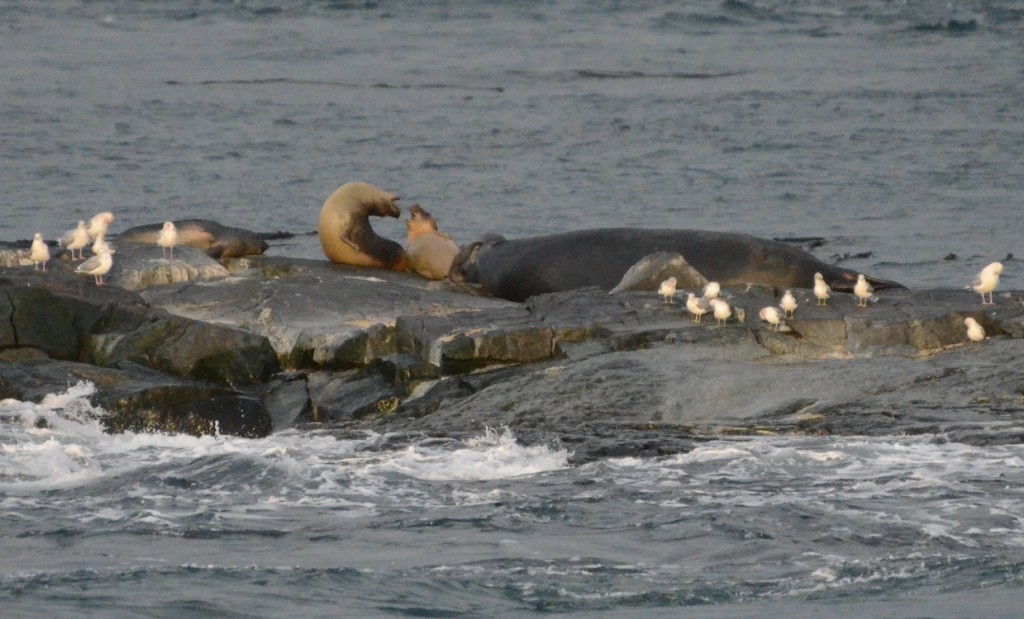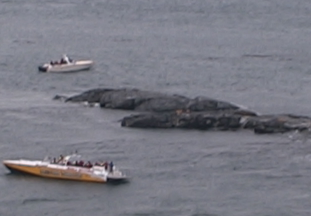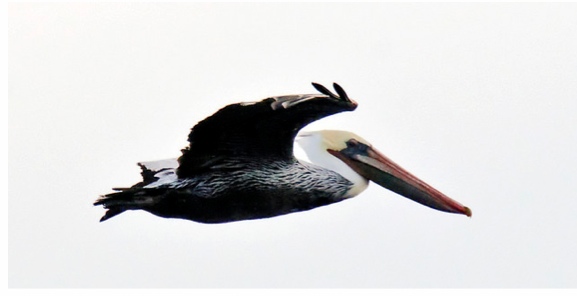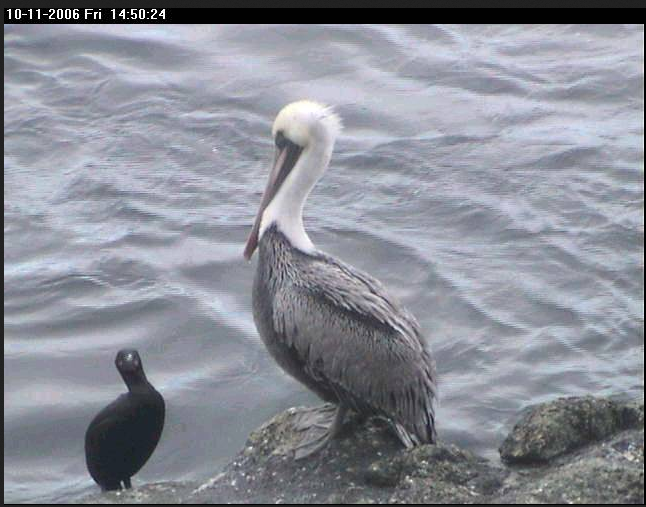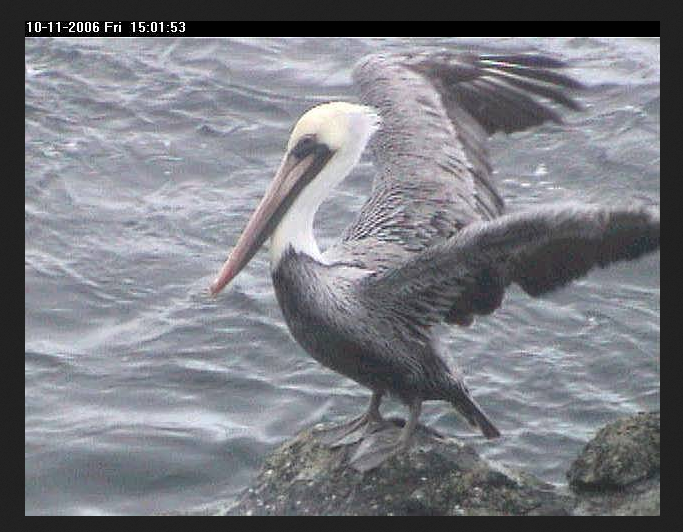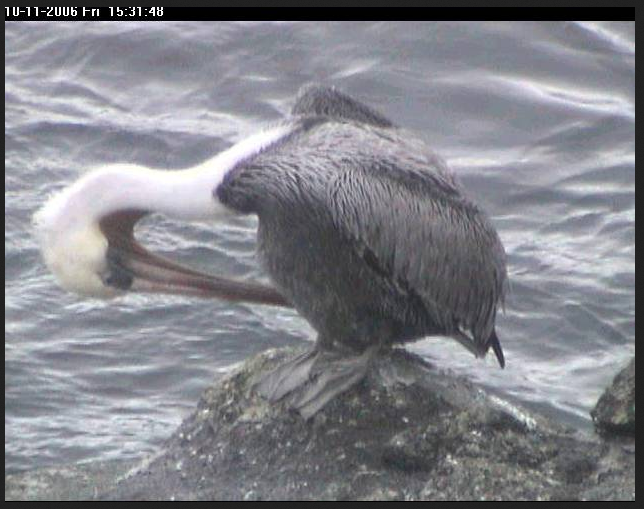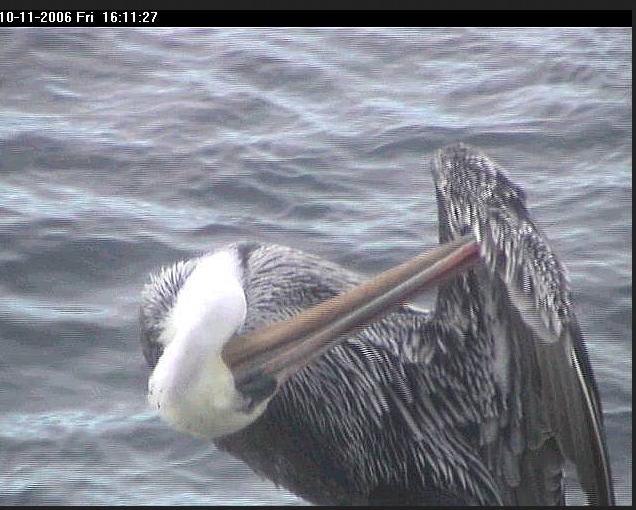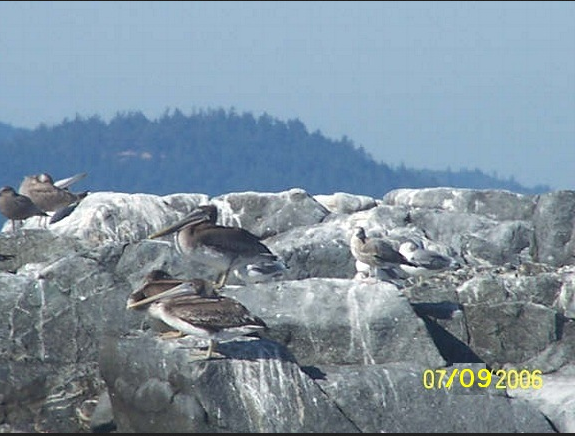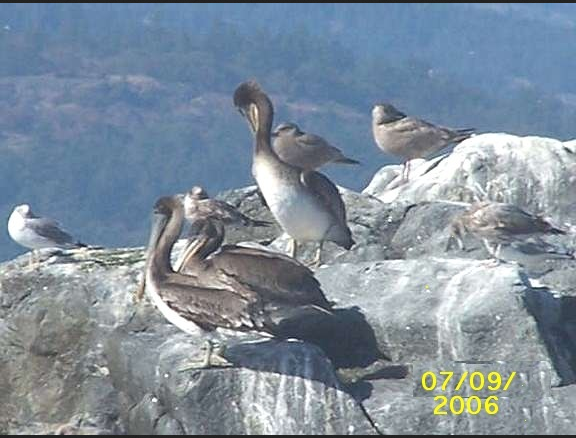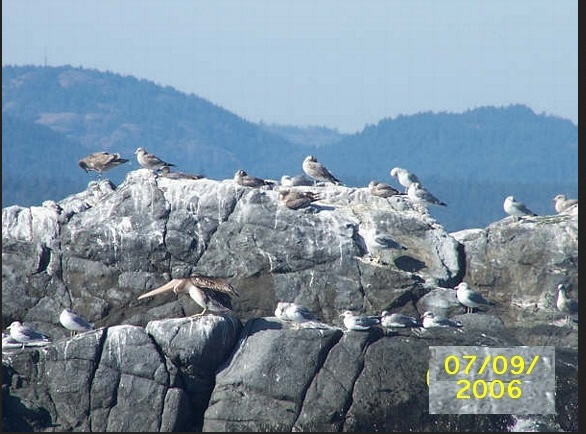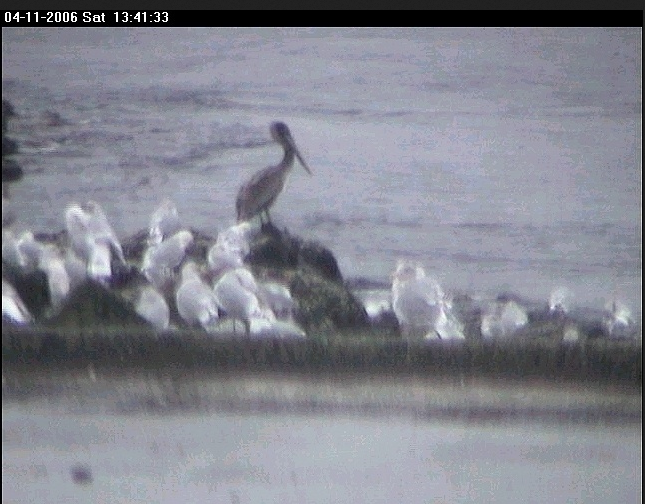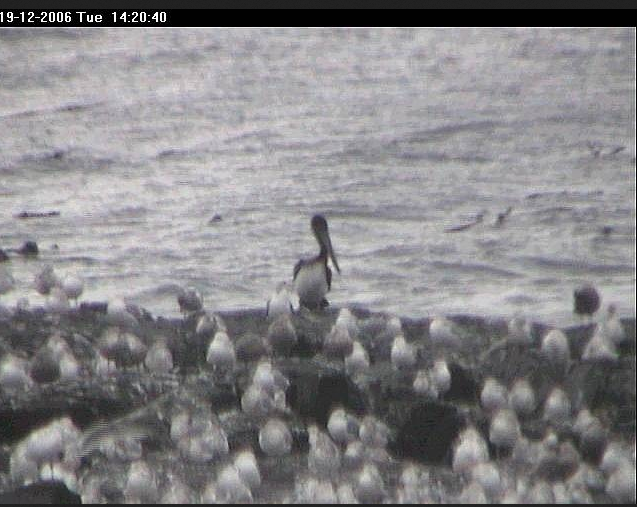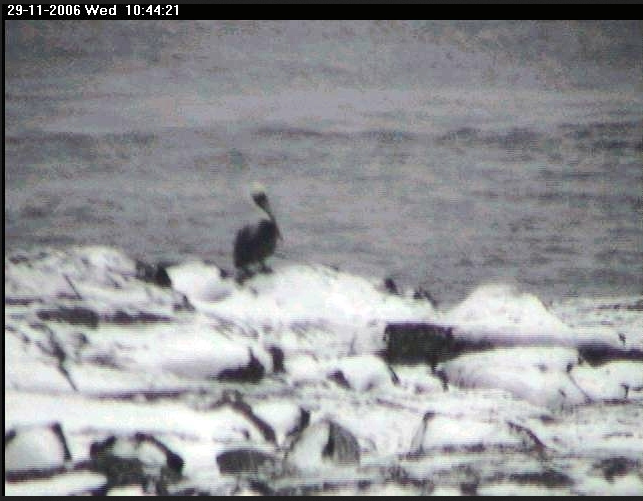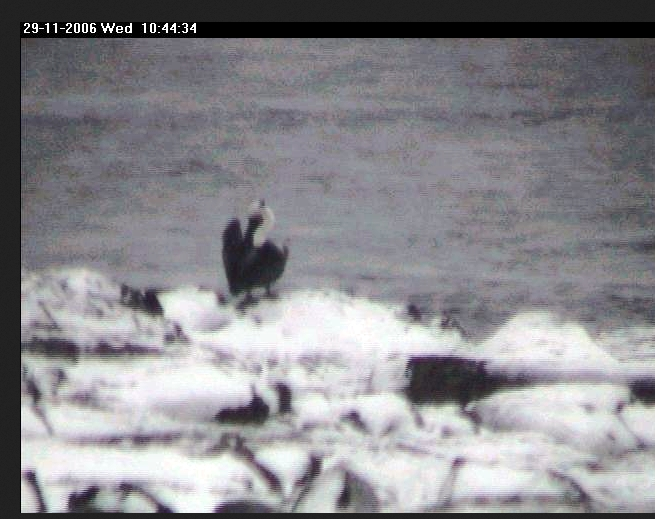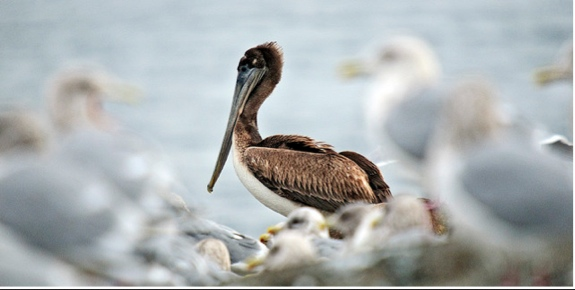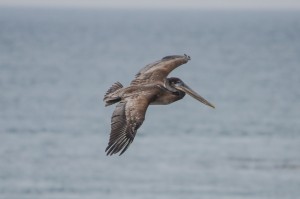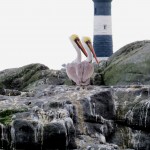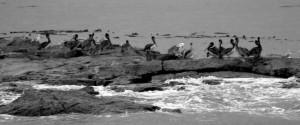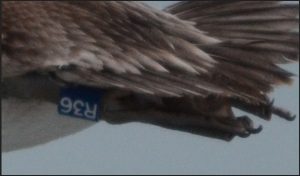‘Elephant Seal’, 5, ‘Fewer females are visible on Middle Rocks. The tagged female has returned to Great Race Island despite having completed her moult. The larger females on Middle Rocks are in various stages of their moults.’, ‘Ryan’, ’20:56:43 ,
-93, ‘2010-05-12’,
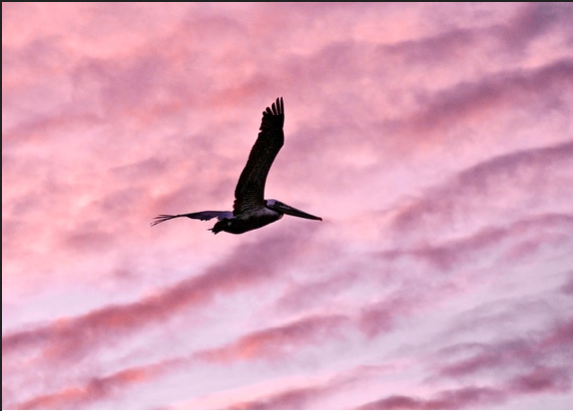
“Brown Pelicans are becoming a common sight at Race Rocks. See the log of May 12, 2010: Ryan Murphy
‘The diversity of bird life continues to increase with the appearance of
Dunlins, Brandts and Pacific Loons today.
Small groups of Brandts flew West throughout the day, followed by several large flocks numbering up to 100 birds in the evening.
A mature Brown pelican roosted here for the night, much to the gulls ” dissatisfaction.
There are still 2 pairs of Harlequin ducks spending their days around Great Race Island, plus
4 Whimbrels were again seen on the SW corner of the island where up to
3 Black Oystercatcher pairs have staked nesting territories. There are a total of
7 pairs of Oystercatchers with territories on the island, but only 2 confirmed nests so far, and of those only one nest with 2 eggs at the moment. Could be a bumper year as a maximum of 5 breeding Oystercatcher pairs have been recorded in the past. ‘,
‘Northern Sea Lion’, 10, ‘The numbers of Northern Sea Lions have been down the past several days, however they are still finding food in the reserve. A commotion right above the tidal turbine today attracted a number of gulls, and I could soon see a Northern sea lion was thrashing a large fish on the surface. Reviewing my photos it turns out the sea lion had captured a wolf eel! Long tasty filets on those protected fish, I can ”t say I ”m not envious!’,
‘Ryan’, ’21:10:38 ,

